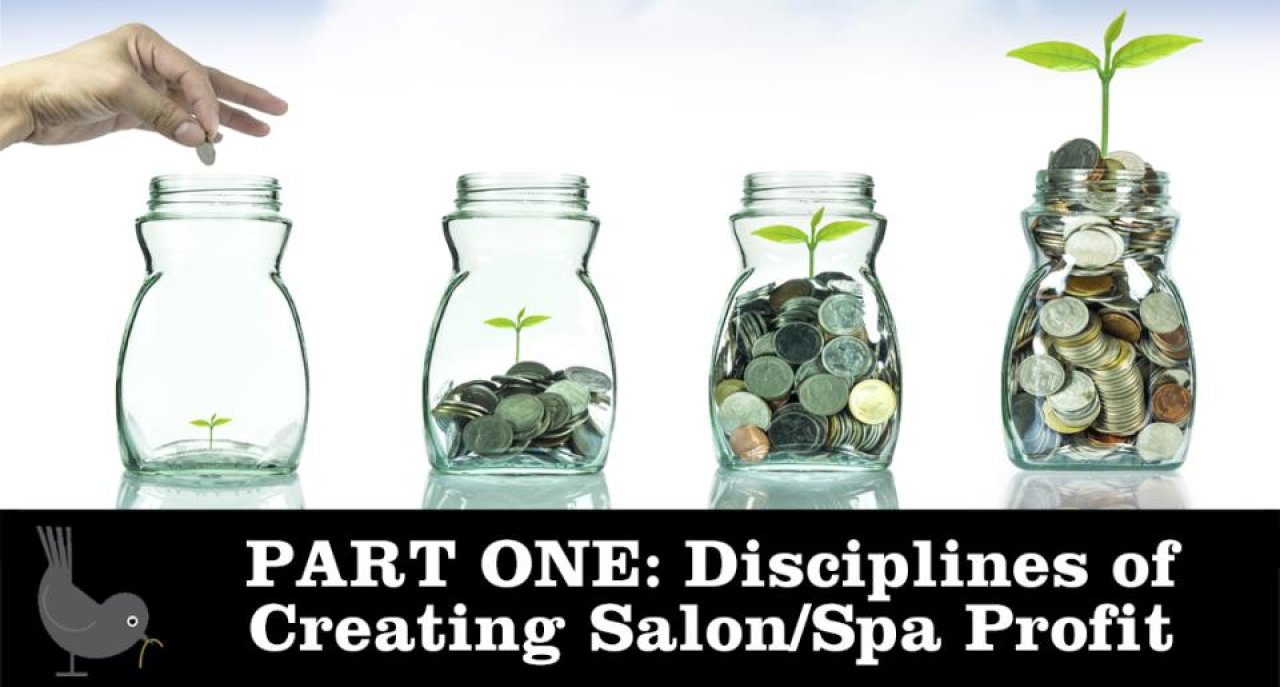Disciplines of Creating Salon/Spa Profit: PART ONE

When a salon/spa business culture takes a lethargic, lack-of-urgency approach to profitability, it gets in its own way. It’s akin to letting go of the controls that allow leadership to guide business activities toward its profitability goals. The cash-flow plan is demoted to the “optional task list,” or evolves into nothing more than an annual ritual that is rarely, if ever, looked at or put into play. Reviewing financial reports or having cash-flow planning meetings happens when it happens, if at all. Financial discipline and consistency is out the window.
Profitability will not take care of itself. Leaders must not only lead by example (that means you don’t violate the budget and expect everyone else to follow it), you must keep profitability at the forefront of all decisions and actions — at all levels of the business. Sense of urgency causes a production worker to suggest a better technique or adjustment in a process to improve quality and trim costs. It causes retail staff to design a special promotion to move out that slow moving merchandise. It causes service providers to multi-task when there’s downtime rather than hire more support staff. It causes sales representatives to make that next sales call, or book that flight in advance to get the best fare.
Here are the essential no-compromise disciplines that must be in place to begin achieving your salon/spa profitability goals:
- Can you read and understand every line item on your financial reports? This includes your Balance Sheet, Income Statement, and Statement of Cash Flows. If not, what’s your plan to learn how? This is non-negotiable. Check out this article I wrote to learn why.
- How often should you receive complete financial reports on your salon/spa? If it’s not at least monthly (that’s only twelve sets of financials a year) it’s not often enough.
- How much time lapses from the end of the month until you receive your financial reports? If this exceeds two weeks, it’s too long. Find out why and address it. If you have in-house bookkeeping, there’s no excuse not to have timely reports within days after the end of the month. Any good in-house accounting software and a competent bookkeeper should be able to produce timely weekly financials. This is non-negotiable.
- Do you have a cash-flow plan that guides your revenue targets and expense budgets? If not, why not? Financial reports tell you the score during and after the game ends. Your cash-flow plan is your financial playbook. Follow the plan, be fiscally responsible, and your financial reports will improve. You cannot grow a business without following a cash-flow plan. This is non-negotiable. The plan is simply a “best guess.” The more you do it and the more you live your cash-flow plan, the better you can predict the future. Want to learn how to build and understand your cash-flow plan? You'll learn this and more at our upcoming. Strategies Incubator Seminar. Want Strategies to build your cash-flow plan for you? We can do that too!
- Do you have weekly cash-flow planning meetings? If not, why not? Having a cash-flow plan is pointless without comparing it to actual revenues and expenses. Are you over or behind your projections? Why? What do you need to do today or over the next week to correct or get back on track? This is why I prefer weekly over monthly financials. I don’t want to find out at the end of the month that we were overspending mid-month.
- Who attends your weekly cash-flow planning meetings? (I hope you’re still not stuck on the sharing numbers thing.) All department leaders need to be present. In larger salons and spas with many departments, separate cash-flow meetings focusing on numbers that are key to that area need to be held weekly.
- Do employees know the score? If your response to, “Hey boss, how’re we doing?” is “Not good enough,” the people responsible for doing the work have no idea what’s going on. Scoreboards and daily huddles are non-negotiable.
- Does your salon/spa require purchase orders to control spending? If not, why not?
- Is your payroll percentage under control? What is the ideal target payroll percent for your salon/spa? What will it take to achieve this?
- Are your inventory levels under control? Money that’s tied up in excess inventory is a cash drain. What’s the plan to get inventory under control?
- If you’re a retail business, are you controlling inventory levels and turning your inventory as often as you need to? Slow inventory turns, in retail, kills cash flow.
- As the leader of your salon, department or division, are you setting the right example to create a fiscally responsible business culture? If not, why not?
There is no debating that the profitability begins with the right disciplines. Creating sustainable and predictable profitability begins at the leadership level. It cannot be faked or given lip service. The no-compromise leader must live financial disciplines, inspire it and relentlessly build a culture to support it.
Read Part Two of this post here: How Systems Drive Salon/Spa Profit: PART TWO
Read Part Three of the article here: Finding Your Salon/Spa Profit Sweet Spot: PART THREE
- - - - - - - - -
Please share your thoughts with me about today's Monday Morning Wake-Up. Click below to comment.
Pass this e-mail on to your business colleagues, managers and friends. They will appreciate it.
Comments
No comments found. Start the conversation!
Leave a Comment